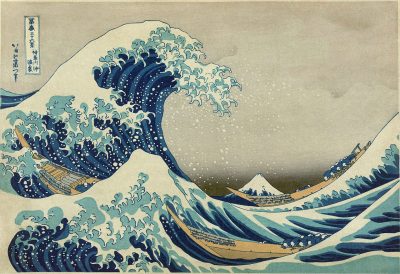 Katsushika Hokusai is well known for his iconic Great Wave off Kanagawa. He was a master in the true sense of the word. Hokusai also produced a three-volume series of books of drawing lessons. These are now online free. The title has been translated as Quick Lessons in Simplified Drawing.
Katsushika Hokusai is well known for his iconic Great Wave off Kanagawa. He was a master in the true sense of the word. Hokusai also produced a three-volume series of books of drawing lessons. These are now online free. The title has been translated as Quick Lessons in Simplified Drawing.
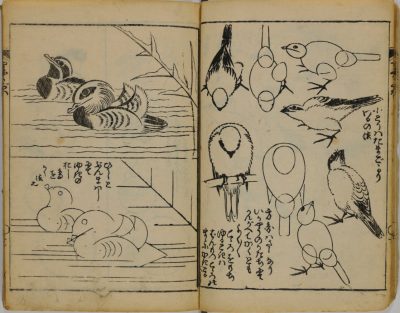 These books neatly demonstrate how drawing is taught today too! For instance, if you have ever done any basic drawing classes, you have probably been asked to draw a sphere, a cube, and a cone. It is a drawing exercise that many courses start out with. The idea is that many things we see can be broken up into these basic geometrical shapes. I was totally flummoxed one day when a woman told me that she tried to take a class, but all she learned was how to draw a cube, a sphere and a cone. She has not understood that we can make better sense of the things we see, if we break them up into basic shapes, then attempt to draw them.
These books neatly demonstrate how drawing is taught today too! For instance, if you have ever done any basic drawing classes, you have probably been asked to draw a sphere, a cube, and a cone. It is a drawing exercise that many courses start out with. The idea is that many things we see can be broken up into these basic geometrical shapes. I was totally flummoxed one day when a woman told me that she tried to take a class, but all she learned was how to draw a cube, a sphere and a cone. She has not understood that we can make better sense of the things we see, if we break them up into basic shapes, then attempt to draw them.
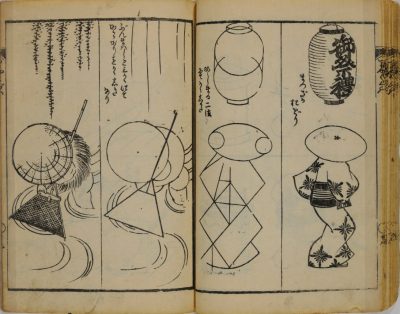 In Volume I, Hokusai breaks down each subject into simple geometric shapes. Each volume is a book, so I have just selected a few page-spreads to share. On all of these pages, I can hear him say to his students “look for the shape of the form” or, because he has composed each motif and as a master of composition, he might alternatively say: “find pleasing arrangements of forms”
In Volume I, Hokusai breaks down each subject into simple geometric shapes. Each volume is a book, so I have just selected a few page-spreads to share. On all of these pages, I can hear him say to his students “look for the shape of the form” or, because he has composed each motif and as a master of composition, he might alternatively say: “find pleasing arrangements of forms”
 (On this site they have used one of those flip through book formats but if you double click on the images they become larger or you can use the slider at the top of the screen)
(On this site they have used one of those flip through book formats but if you double click on the images they become larger or you can use the slider at the top of the screen)
Volume II is different, as it would be what we call a combination of ‘contour’ and ‘gesture’ drawing. It is quite wonderful and I have spent a fair bit of time thinking about this book, as it is a combination of two types of drawing techniques.
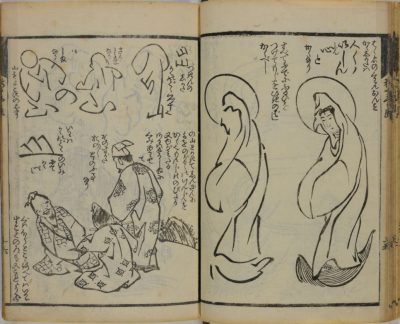 Let me explain because the combination of these techniques in Hokusai’s hands is quite wonderful. Usually, a gesture drawing class starts off with a model doing a number of 30-second poses then 2-minute poses, then 5-minute poses, and so on. Some teachers use gesture drawings as warm-ups as they are a great way to focus the mind. The idea is to find the essential gesture or action of the form. They become an expression of movement and are done quickly.
Let me explain because the combination of these techniques in Hokusai’s hands is quite wonderful. Usually, a gesture drawing class starts off with a model doing a number of 30-second poses then 2-minute poses, then 5-minute poses, and so on. Some teachers use gesture drawings as warm-ups as they are a great way to focus the mind. The idea is to find the essential gesture or action of the form. They become an expression of movement and are done quickly.
Contour drawing, on the other hand, is done very slowly and consists of drawing the outline of the subject or object. It sounds simple enough, but the way it is taught in many schools is to use ‘blind contour’ drawing which is a technique for teaching drawing. With ‘blind contour’ drawing, you have something set in front of you, and you are asked to draw it by putting your pen to paper and tracing around the object by NOT looking at the page. It is very hard to do, and the only way I can manage it is to imagine I am touching the edge of the object and feel the edge very slowly with my pen. Some students hate the exercise. Everyone makes a drawing that looks odd and out of proportion. But that is not the point of the exercise.
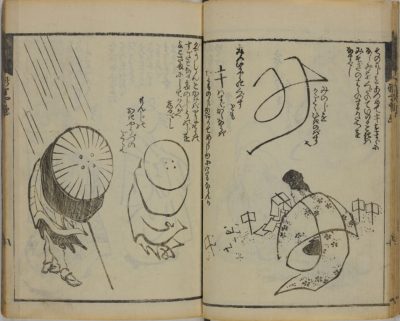 An aspect of blind contour drawing is to train the brain to draw what you see, not what you think you see. To notice what is actually there. Do enough of them, and at some stage, something in your brain clicks and when you need to, you can see the world around you as 2D – in other words, the exercises have taught your brain to interpret all this 3D information in a flat way. It will not happen if you don’t practice and concentrate when you do it. It will also not happen if you try to draw from photographs because the photographs have already done the conversion to 2D for you.
An aspect of blind contour drawing is to train the brain to draw what you see, not what you think you see. To notice what is actually there. Do enough of them, and at some stage, something in your brain clicks and when you need to, you can see the world around you as 2D – in other words, the exercises have taught your brain to interpret all this 3D information in a flat way. It will not happen if you don’t practice and concentrate when you do it. It will also not happen if you try to draw from photographs because the photographs have already done the conversion to 2D for you.
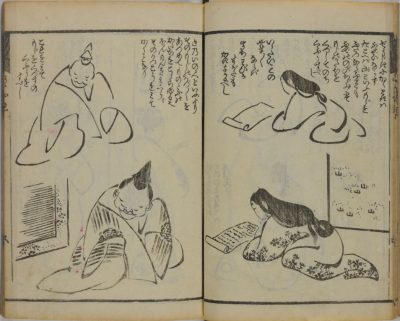 Anyway, I am getting sidetracked, because often people use a mix of continuous-line drawing (outlines) and contour drawing where they do look down at the page as they draw. This is called modified contour drawing because it is a modified form of the blind contour exercise. This form of drawing can be very expressive, particularly when you vary the weight and quality of the line.
Anyway, I am getting sidetracked, because often people use a mix of continuous-line drawing (outlines) and contour drawing where they do look down at the page as they draw. This is called modified contour drawing because it is a modified form of the blind contour exercise. This form of drawing can be very expressive, particularly when you vary the weight and quality of the line.
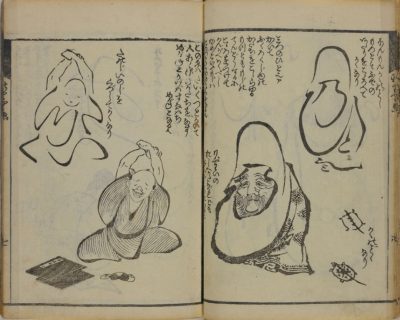 In Volume II if you look, Hokusai is still referencing key shapes, but while doing so, he is also combining gesture and contour. It really is brilliant. I really have to study this volume more!
In Volume II if you look, Hokusai is still referencing key shapes, but while doing so, he is also combining gesture and contour. It really is brilliant. I really have to study this volume more!
Volume III is a series of wonderful diagrams that record each brush stroke. They are the equivalent of a step-by-step tutorial. Some would say these diagrams are formulaic – but this is a step-by-step from a master! Move aside from YouTube for the moment, and take a good look at what Hokusai is trying to show us. For me, this whole volume became about mark making – or perhaps I should say, mark making with a brush and ink. Each mark is economical, expressive and descriptive.
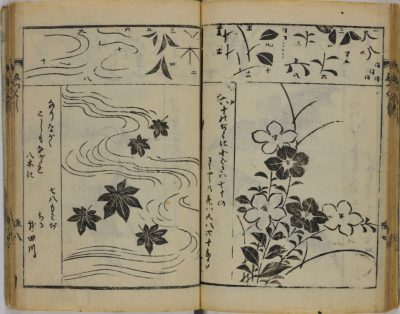 I was taught that, with each new purchase of art materials, to explore the marks it can make. This volume is a visual demonstration of why you might want to follow that advice. I know when I buy new art gear, I jump right into using it and I don’t give myself time to explore just making marks with the new pens, pencils, brush etc. Looking at this volume, I think I need to go back to doing some very basic mark making exercises.
I was taught that, with each new purchase of art materials, to explore the marks it can make. This volume is a visual demonstration of why you might want to follow that advice. I know when I buy new art gear, I jump right into using it and I don’t give myself time to explore just making marks with the new pens, pencils, brush etc. Looking at this volume, I think I need to go back to doing some very basic mark making exercises.
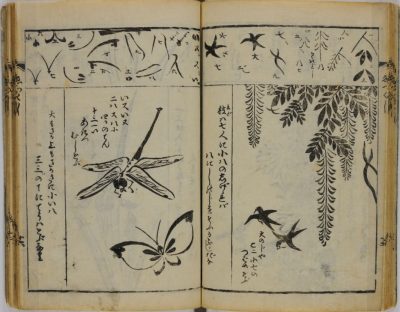 There is so much to learn from these three volumes by Hokusai. For anyone who is interested in drawing, it would be worthwhile setting a month or two or three aside, sitting down, and really studying each volume and using them as jumping off points for your own exercises. I am not suggesting doing this to copy slavishly, but to analyse what he was doing. I am sure these “Quick Lessons in Simplified Drawing” would prove to be amazingly helpful – and not so ‘quick’!!.
There is so much to learn from these three volumes by Hokusai. For anyone who is interested in drawing, it would be worthwhile setting a month or two or three aside, sitting down, and really studying each volume and using them as jumping off points for your own exercises. I am not suggesting doing this to copy slavishly, but to analyse what he was doing. I am sure these “Quick Lessons in Simplified Drawing” would prove to be amazingly helpful – and not so ‘quick’!!.
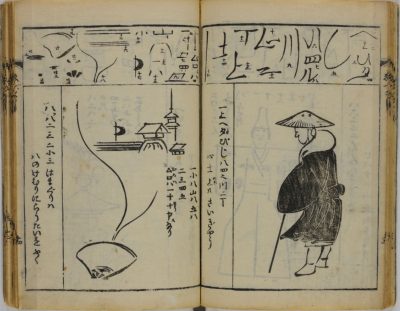 You can find out more about Katsushika Hokusai (1760–1849) on Wikipedia
You can find out more about Katsushika Hokusai (1760–1849) on Wikipedia
You will find these three volumes and other works on the Catalogue Raisonne of Katsushika Hokusai website
If you enjoy Japanese prints there are thousands in the huge woodblock print database of Ukiyo-e.org.
Enjoy this article? Subscribe to In a Minute Ago
Have Inaminuteago delivered to your inbox by using the ‘follow’ feature in the sidebar. If you are on a mobile, cell phone or tablet you will need to scroll to the bottom to find the ‘follow’ feature. Just enter your email address, and when you get the confirmation email make sure you say ‘yes’ and you are all set!


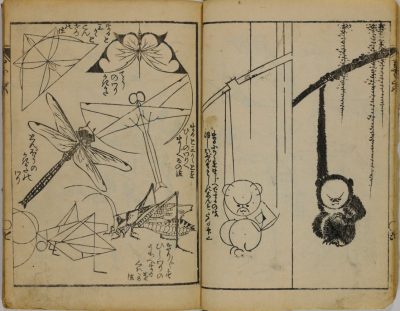
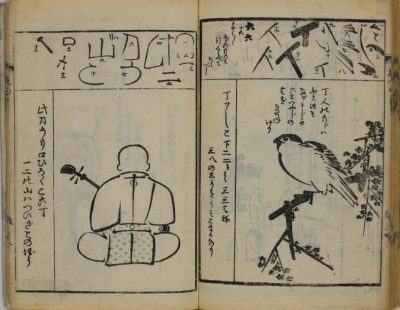
Thank you, thank you Sharon for finding and sharing these wonderful prints. I love Oriental paintings, drawings, and have tried a few. I need Lots more practise and these books with basic instructions will be fantastic to try.
I like what you have written and if it’s okay would like to copy that for reference. My first effort of blind drawing was so atrocious I became determination to learn to draw.
HI Maureen – everyones blind drawing is off – as its not really supposed to produce anything – its a learning exercise – and a good one but unfortunately lots of students get put off because they think they need to have something at the end – do it on butchers paper or newsprint and feel free to toss in the bin – its the observation that counts you are training mind and hand – and sure go ahead an copy my words I am pleased you find them useful enough to worth it!
Thanks again Sharon. I’m not very observant. I’m finding that having notes and tips on hand are improving my focus.
Thank you so much for this interesting post!
I love Hokusai and bought one of his mangas. Moreover I am struggling with improving my drawing skills. I started only a few years ago and just bought a book in which the author breaks down his drawings to their basic forms. I could never get used to this method so far. So much to think about and study! Hokusai is such a great drawing master!
Suzanne I am pleased you like the post and the resource – its a great little collection and really worth studying
Thank you for this post Sharon! I found these techniques really exciting and I will definitely go through these volumes!
I am pleased you can see how useful they are – enjoy exploring his ideas!